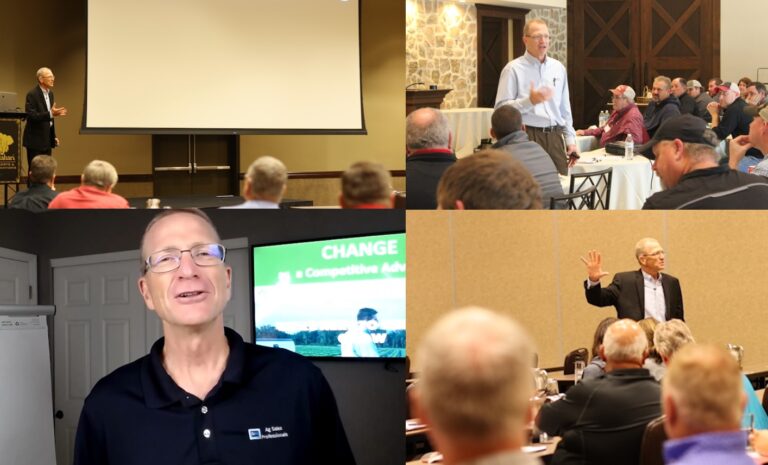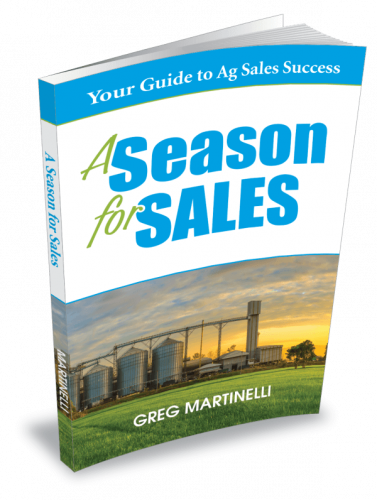The missing ingredient in your selling process
.
Critical Selling Skill topic in the last 60 days
Over the last 60 days, I’ve had the same discovery-style conversation with several audiences as well as several coaching discussions with salespeople. So, I thought it might be helpful to revisit this topic with everyone this week.
Previous articles and podcast on this subject: Uncover the Impact Podcast version
Thie struggle that so many salespeople have is this:
- They go out and solve a customer’s problem
- Yet, fail to get the sale because the customer never understands the value of that solution.
- Neither the salesperson nor the customer determines the cost (dollars, time, emotion) of that problem.
- Or does not value the features and benefits enough.
.
It’s a great moment when salespeople take the time to think about how important it is to uncover the impact with their customers. They can’t believe they were trying to sell without it. They realize how random their selling process was previously.
Contributing to the problem are sales training programs and trainers not understanding this one critical ingredient. They mean well.
They stress over and over to:
- Call on our customers and prospects.
- Ask them good questions
- Find a pain point or a problem your customer has
- Present one of your products as a solution to that problem.
- Close, close, close
Yes, that is the selling process. However, as mentioned, there is one single, critical step that is missing in that process: Uncovering the impact of the problem. And the impact is determined in one of three types of value: money, time, or emotion.
I see this too often in role play sessions or when riding along with salespeople on their calls. The minute a customer tells them about a problem or something they want; the salesperson jumps on it with excitement. Immediately going into presentation mode to provide their solution to the customer’s problem.
After presenting their solution, the typical response by the customer is…” Sounds great. What does that cost?” The salesperson quotes a price, at which time the customer blurts out, “Whoa, my problem isn’t that big of a problem. I can’t afford that. I’m happy with what I’m doing.”
Our well-intentioned salesperson is now dead in the water. With nowhere to go, they are selling uphill. They have to take a shot in the dark as to how effective their solution is for this customer. Since our customer has already said no to the salesperson’s proposed product, it becomes difficult to get the customer to verbalize the impact the problem has on his farm.
The secret to uncovering the impact is all on the selling style of the salesperson. You have to train yourself to take a moment when a customer reveals a problem they are having. It’s all in that split second between a customer saying, “I’m struggling in that low ground that’s too wet”.
Tempting responses:
- “We have a great seed line up for wet ground”
- “Our product line in wet ground outperformed everyone’s wet ground products last year in trials. Let me show you the plot results.”
Better responses:
First, train yourself to pause and think for a second. Then go back with a question. The minute you hear the need, ask a clarifying question.
- “When you say struggling, how do you mean?”
- “Struggling in what way?”
- “How did you deal with it or how are you dealing with it?” “What are most producers in this area doing to solve that problem?”
- “How big of a problem is it?” You are looking for a value answer (dollars, time or emotion answer).
- If they reveal a value, expand on it and get it in their words.
- The producer might say, “It’s killing my yields, costing me a fortune.”
- Those are not quantifiable values. Keep digging, “killing yields?” or “How much of a fortune are you talking about?”
- If they reveal a value, expand on it and get it in their words.
- If they won’t reveal a value factor, then you might respond:
- “Doesn’t seem like it’s that big of a problem”
- “I hear you, but it couldn’t be that big of a problem”
- “On some farms in the area, this can cost a producer up to about $20 an acre. You think that’s a crazy number or seem right?”
Without establishing a solid understanding of the impact, you’re really on a fishing trip. You’re just hoping that your solution is going to seem right to your customer.
Try this on your next sales call. After asking your customer how it’s going and they tell you they have a problem or they are looking for a product, get them to verbalize how big of an impact that problem is creating. If it’s a product they are looking for, ask them the above questions to reveal what that product will mean to their farm (in dollars, time, or emotion).
Once they do, you should have a solid base to work on for recommending your product and the value it brings. After all, selling a $5/acre product is a lot easier when you know it solves a $30/acre problem. Failing to understand the $30/acre and you are leaving out one of the most important components of the selling process.


